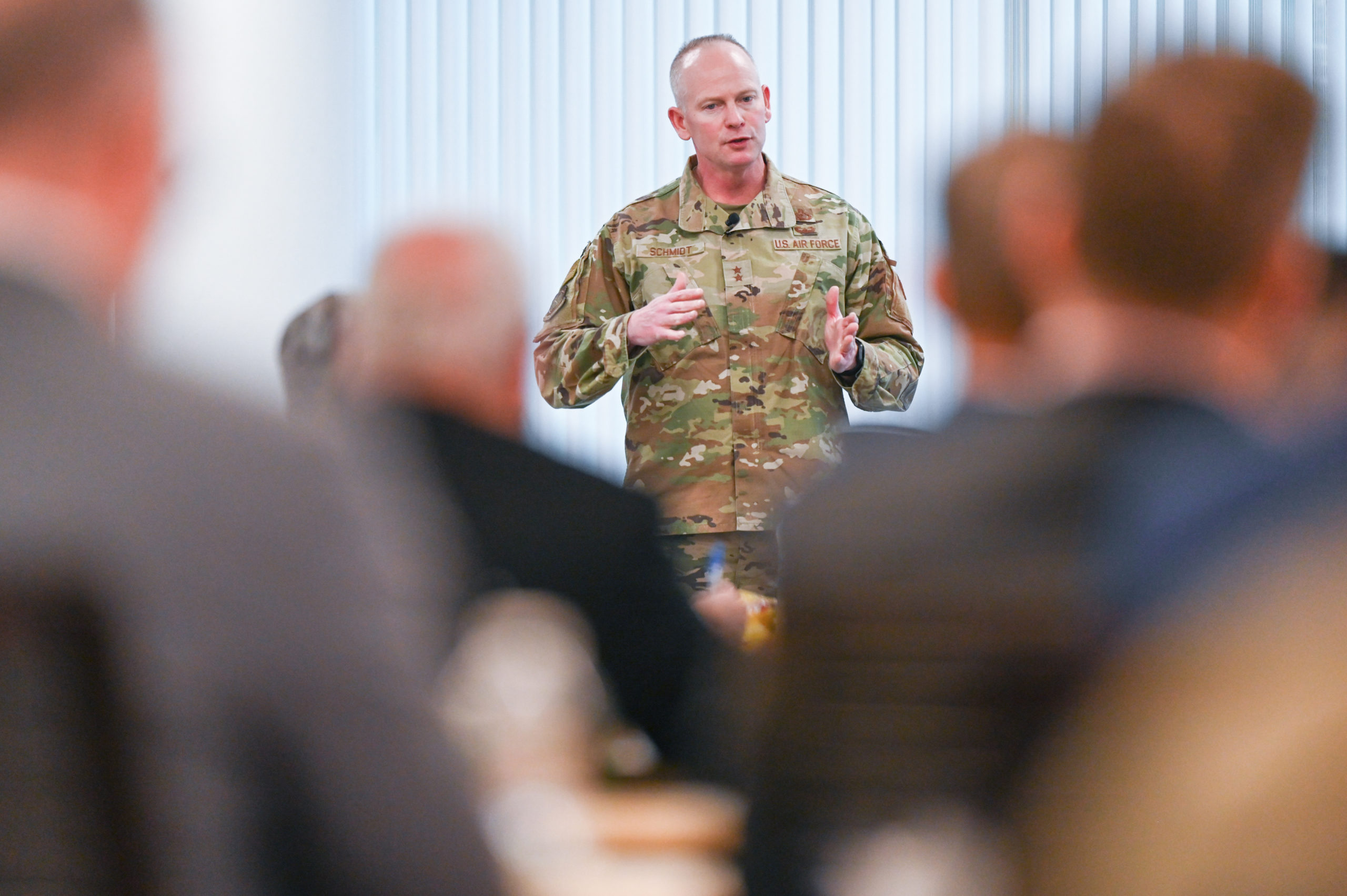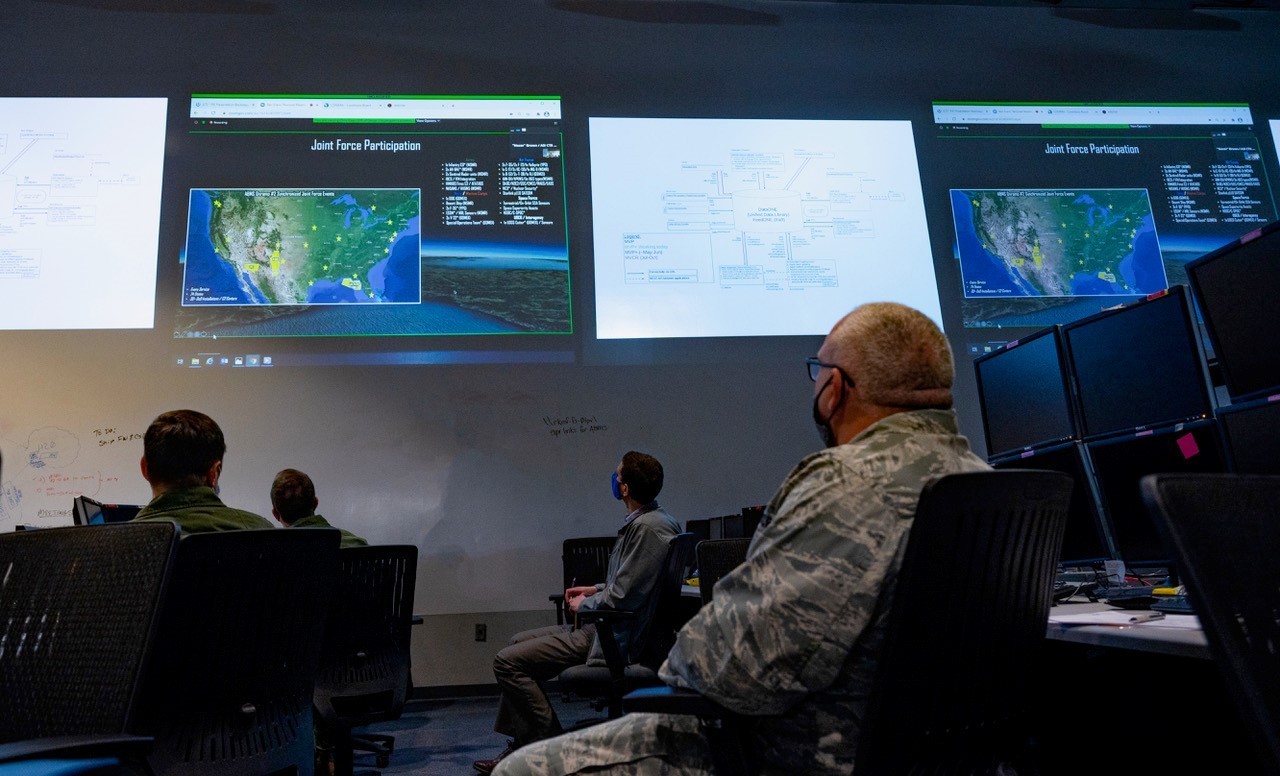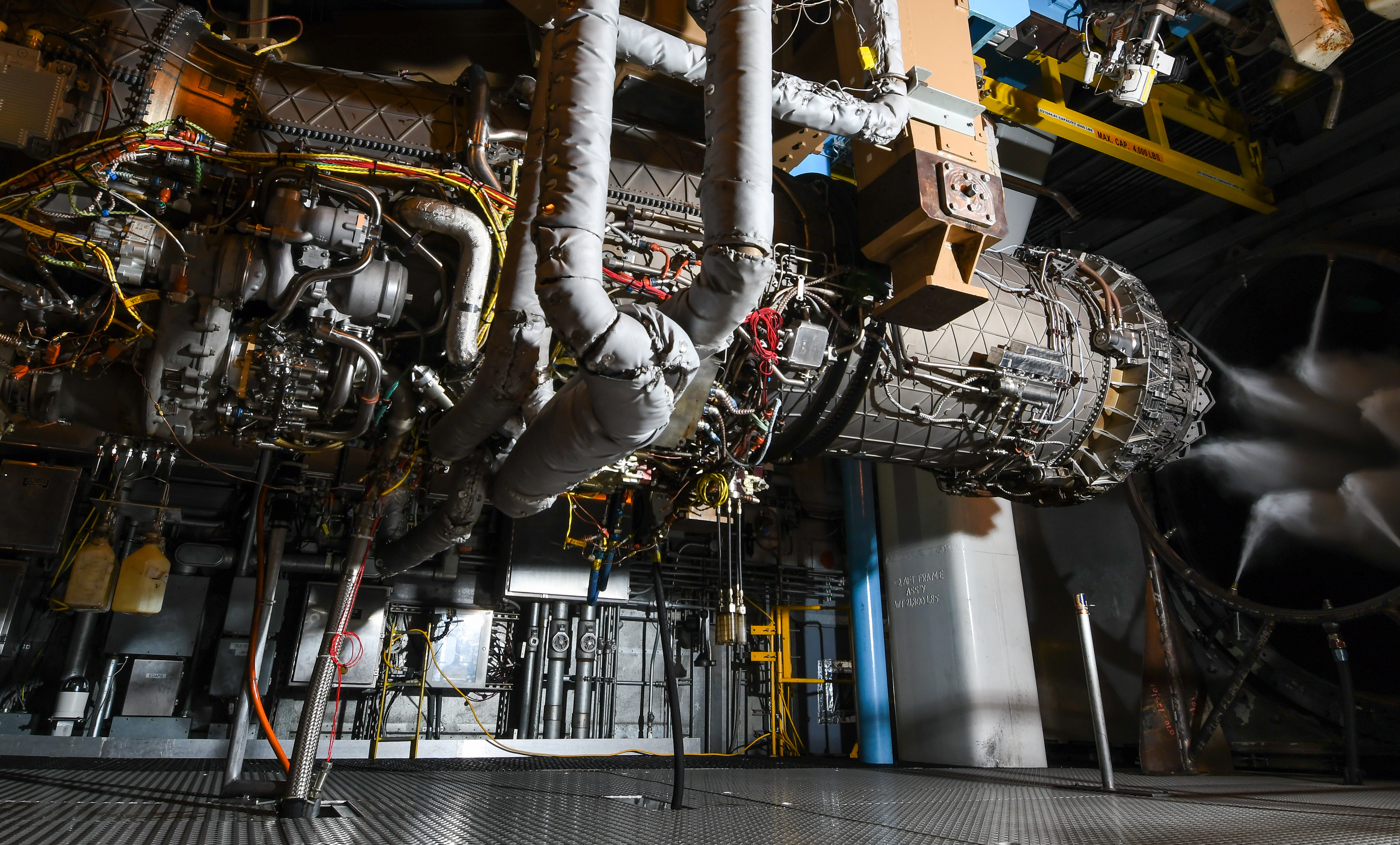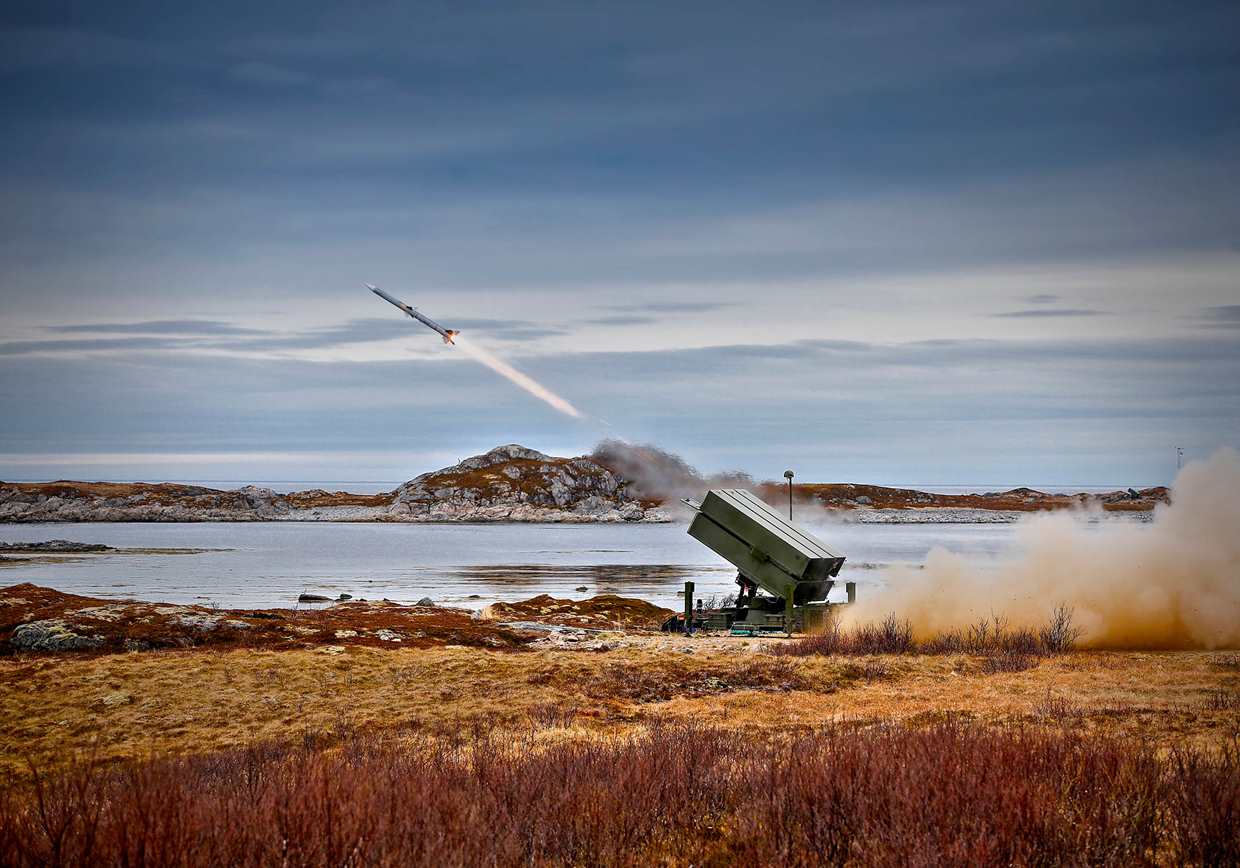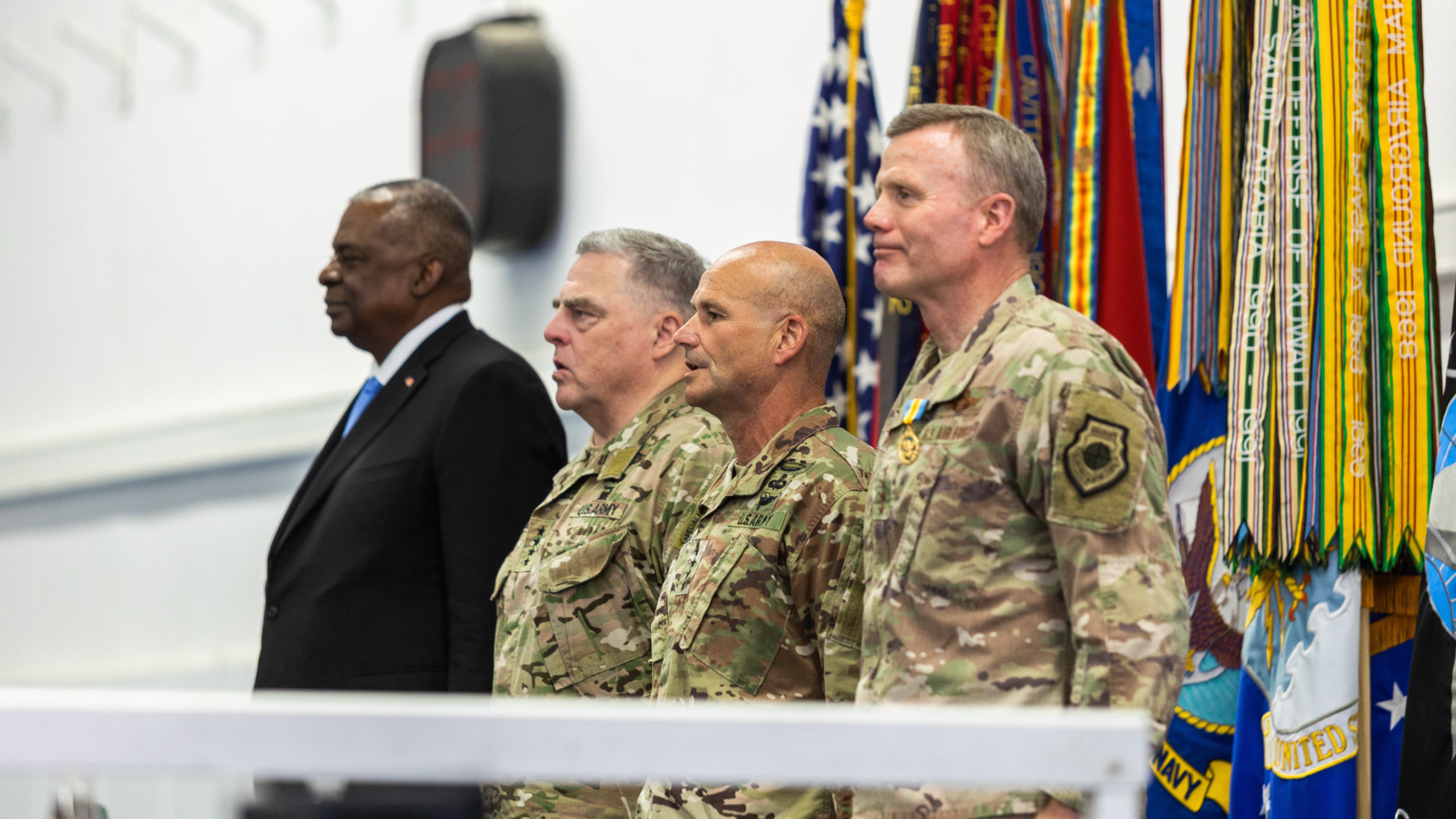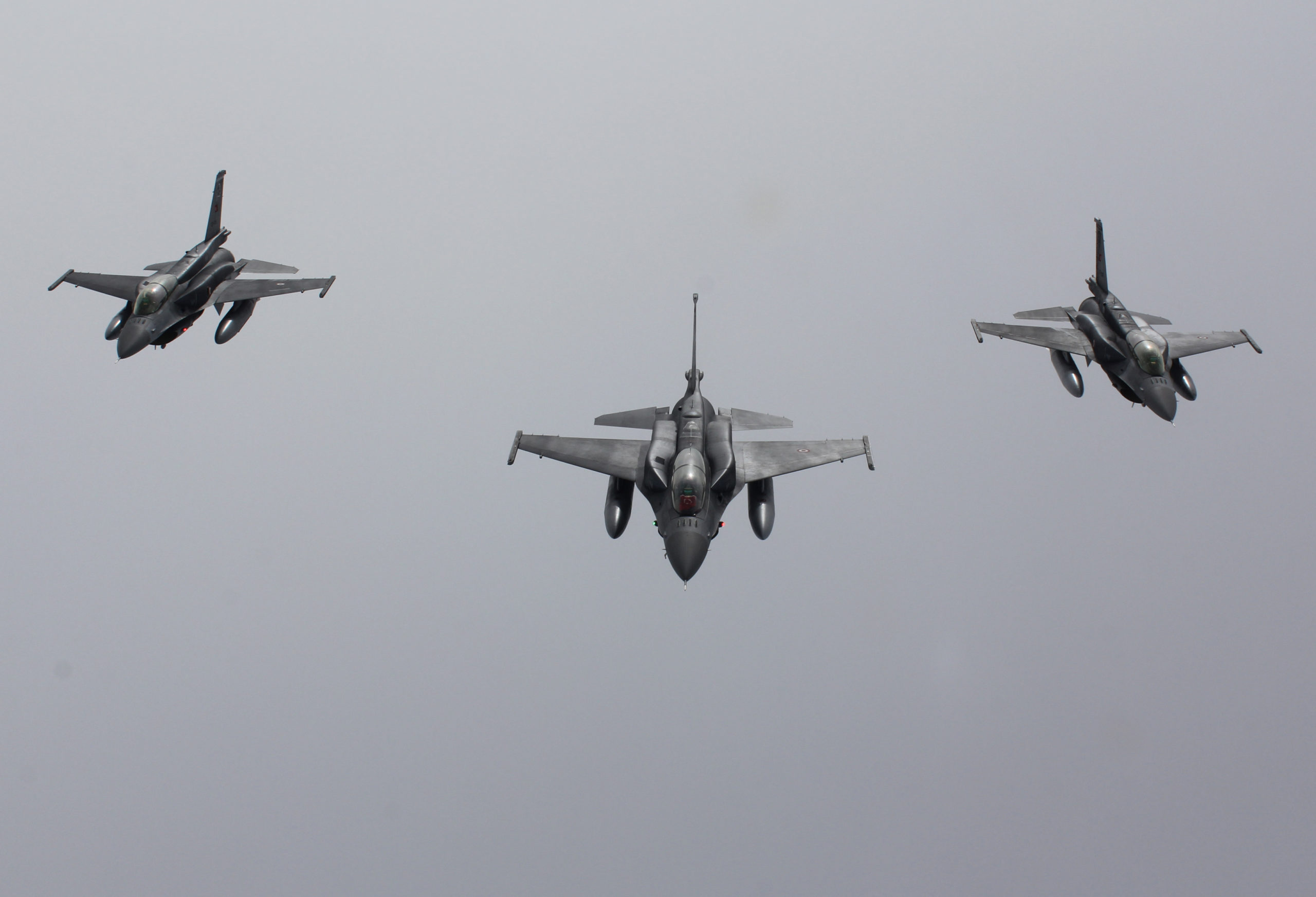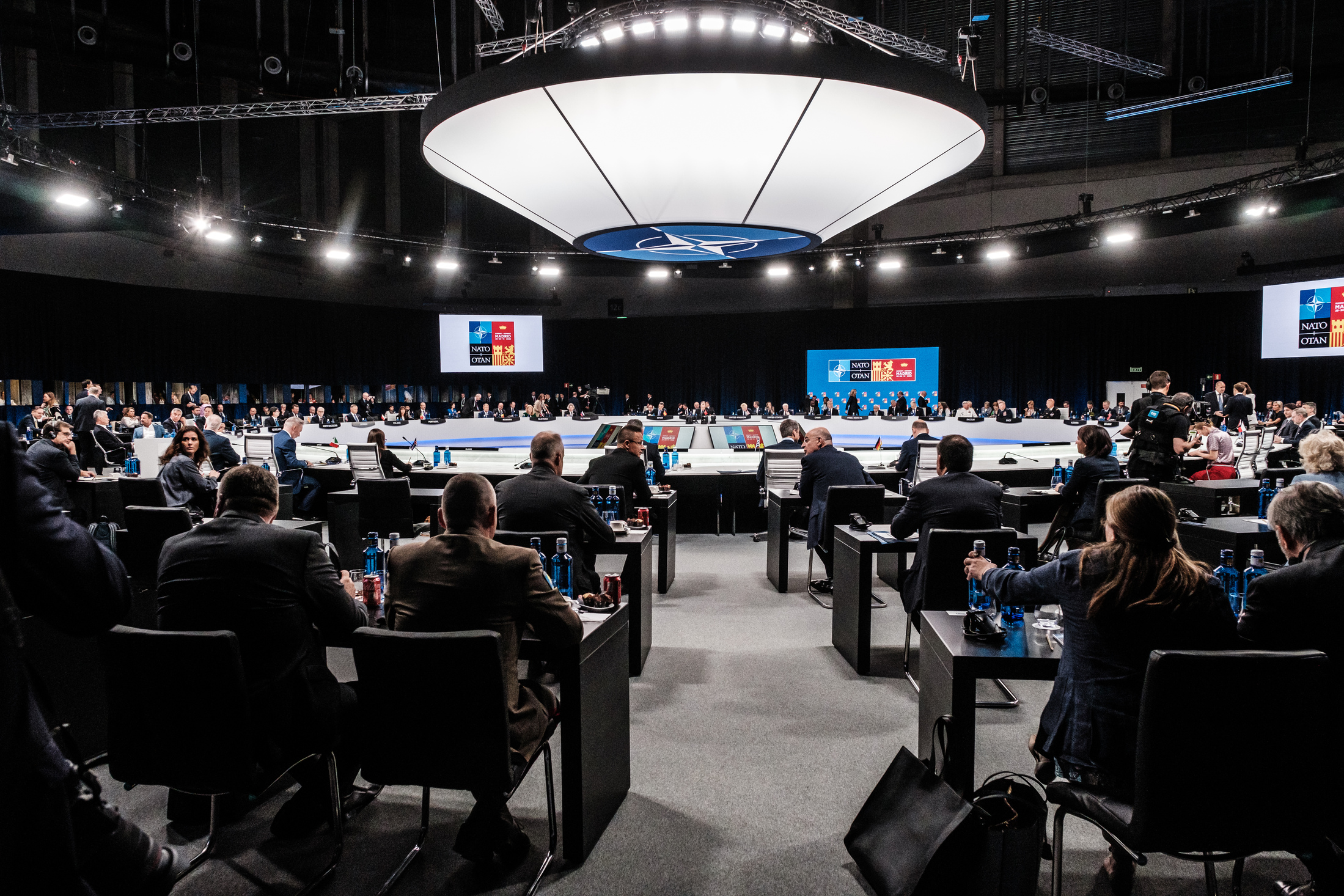Air Force Lt. Gen. Michael J. Schmidt took command of the F-35 Joint Program Office on July 5, succeeding Air Force Lt. Gen. Eric Fick, who is retiring. The succession of an Air Force PEO by another—breaking more than 25 years of back-and-forth joint leadership—may signal that the JPO is being prepared to split into two entities.
In a Washington, D.C., ceremony presided over by William A. LaPlante, undersecretary of defense for acquisition and sustainment, Schmidt accepted command of the JPO remotely, as he had recently tested positive for COVID-19.
Fick had led the JPO since July 2019 and was the deputy PEO for two years before that. He managed it through “significant challenges” such as the COVID pandemic, rising sustainment costs, engine availability headaches, and the expulsion of Turkey from the program, LaPlante said. “His fingerprints are going to be on this airplane forever,” which LaPlante said will amount to “more than 50 years” of future service.
Fick said a continuing challenge for the program is the Tech Refresh 2 and 3 effort, both necessary to prepare the F-35 fleet for the introduction of the Block 4 upgrade and step-change in production. He said, “we can see … light at the end of the tunnel” in getting the F135 engine power modules flowing to the field more rapidly, but it is “one alligator” among many that must be managed. Still, “we got there much, much faster than anyone though that could happen.”

Repeating a comment he said he has made often with the JPO, Fick said, “time is your only non-renewable resource” and that the F-35 must advance along many fronts simultaneously. His motto has been “readiness, relevance, reality, and ramp,” and he said he is proud that the program has reached an annual software release, despite the original plan for a twice-annual release.
The F-35 is “utterly dominant in the battlespace today,” he said, but must be continuously updated to remain that way. Affordability must be brought “into every conversation we have.”
LaPlante called the selection of Schmidt “the right person for the job at the right time,” noting Schmidt’s holding five PEO jobs during his career, in three of which he succeeded Fick.
Neither Fick nor LaPlante mentioned the Lot 15-17 contract, overdue since November. Negotiations on Lot 15-17 have been held up by the services’ reduction of the number of aircraft they will buy in those lots, as well as sharp increases in inflation since last year.
Also not mentioned was the fact that the program is breaking with its tradition of switching program leadership back and forth between the Navy and Air Force. Since its inception, the PEO has reported to the other-service’s acquisition executive, and the deputy was also from the other service, with each job swapping services when the next PEO came in.
The pattern, established in the Joint Strike Fighter charter, was meant to ensure the program was as joint as possible.
Schmidt, an Air Force general officer, is succeeding Fick, also an Air Force officer. Either the Navy or Marine Corps, by program tradition, would have supplied the new PEO.
When asked for an explanation of why the longstanding pattern is being abandoned, a Pentagon spokesperson said that “as with all previous leadership changes in the JPO, the best candidate for the job was selected.” The JPO charter allows for “flexibility” in choosing PEOs, she said.
The Pentagon did not respond to questions as to why there wasn’t a sufficiently qualified officer in the Navy or Marine Corps ready to accept the job, but Pentagon sources said the timing was such that the Department of the Navy would have exceeded its billets for three-star flag officers if it supplied the new PEO. However, it did say that Schmidt’s appointment “is not temporary” until a Navy or Marine Corps flag officer can take the job.
The deputy program executive officer is also now a civilian—Sean Burke—who took on that assignment in February of this year.
Sources also said Schmidt’s selection may be an indication that the Pentagon is preparing—as Congress has directed—to break up the program office such that each service manages its own fleet of F-35s. The Air Force operates F-35As, which take off and land conventionally and which comprise by far the largest component of the all-variant F-35 inventory, worldwide. The Marine Corps’ F-35Bs have short takeoff/vertical landing capability, while the Navy/Marine Corps F-35Cs can operate from conventional aircraft carriers.
Congress has said it believes F-35 sustainment costs could be sharply reduced if the services were allowed to organize sustainment according to their own needs.
Asked if Schmidt’s appointment has to do with that transition, the spokesperson said, “The Department continues to define executable options to move the F-35 enterprise forward.” Its goal will be to implement congressional direction in the National Defense Authorization Act “with no degradation to the capabilities we collectively develop, deliver, and sustain for our joint and international war fighting customers.” The spokesperson said the Pentagon will provide “updates on the way ahead as available.”
Fick has been resistant to those changes to the JPO’s purview, insisting that a joint approach to program management saves the most money and reduces duplication of effort; but has also said the JPO will do as Congress instructs.
The Air Force is grappling with whether it wants to use one of the Adaptive Engine Transition Program (AETP) powerplants in the Block 4 version of the F-35. The engine would give the jet more range and electricity-generating capability, as well as some improvement in stealth, but Fick has insisted that “you have to pay to be different” from the other users, and the Air Force would have to integrate a new engine into the F-35 at its own cost. Pratt & Whitney has pitched an upgraded version of the F-35’s F135 engine as one way to address the need for more power, but it and GE Aircraft are also pushing for their AETP powerplants.
Air Force Secretary Frank Kendall has said he has discussed getting the Navy to bear some of the AETP integration costs on the F-35, but that the discussions are still in early stages.
